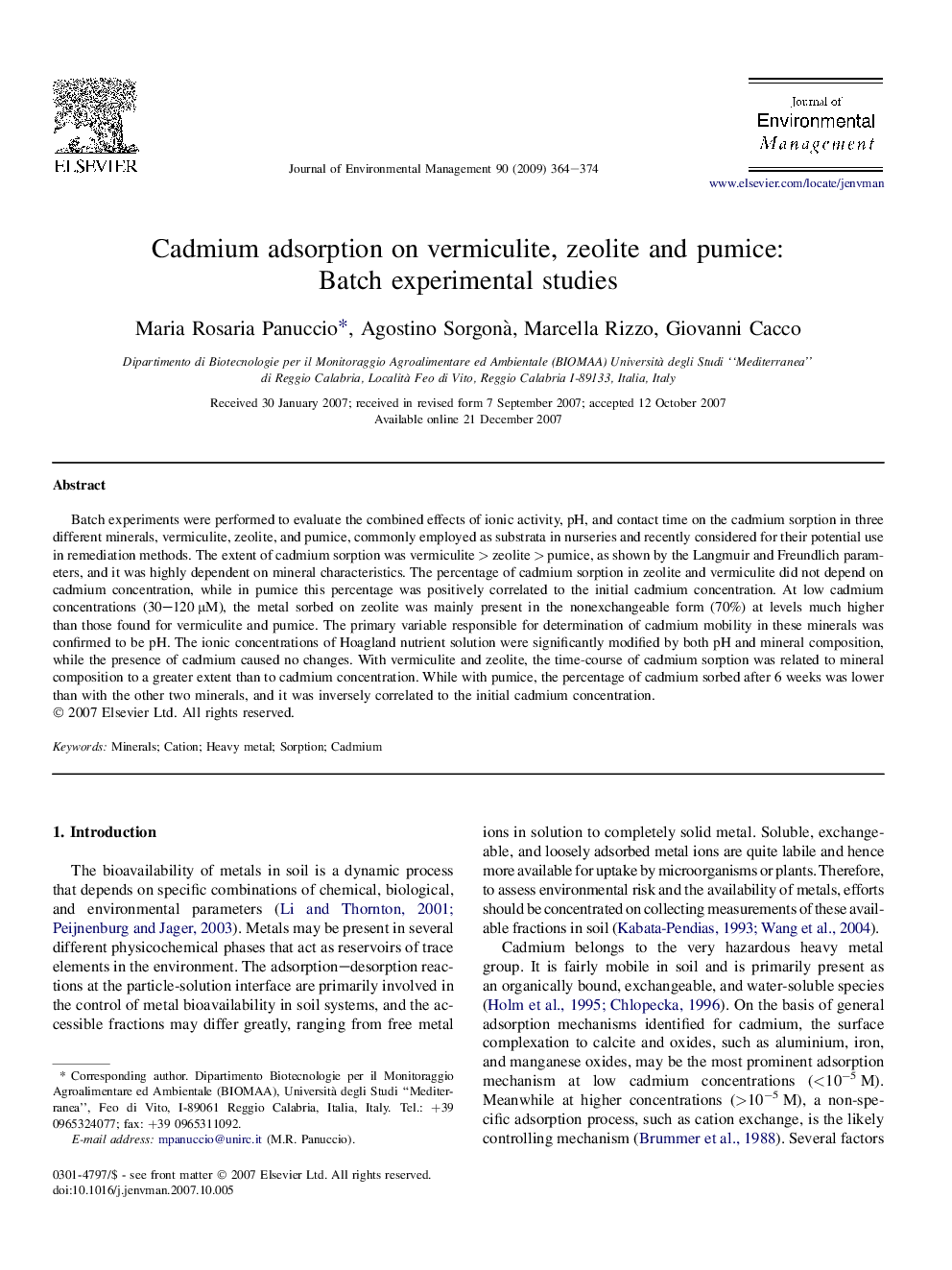| Article ID | Journal | Published Year | Pages | File Type |
|---|---|---|---|---|
| 1058103 | Journal of Environmental Management | 2009 | 11 Pages |
Batch experiments were performed to evaluate the combined effects of ionic activity, pH, and contact time on the cadmium sorption in three different minerals, vermiculite, zeolite, and pumice, commonly employed as substrata in nurseries and recently considered for their potential use in remediation methods. The extent of cadmium sorption was vermiculite > zeolite > pumice, as shown by the Langmuir and Freundlich parameters, and it was highly dependent on mineral characteristics. The percentage of cadmium sorption in zeolite and vermiculite did not depend on cadmium concentration, while in pumice this percentage was positively correlated to the initial cadmium concentration. At low cadmium concentrations (30–120 μM), the metal sorbed on zeolite was mainly present in the nonexchangeable form (70%) at levels much higher than those found for vermiculite and pumice. The primary variable responsible for determination of cadmium mobility in these minerals was confirmed to be pH. The ionic concentrations of Hoagland nutrient solution were significantly modified by both pH and mineral composition, while the presence of cadmium caused no changes. With vermiculite and zeolite, the time-course of cadmium sorption was related to mineral composition to a greater extent than to cadmium concentration. While with pumice, the percentage of cadmium sorbed after 6 weeks was lower than with the other two minerals, and it was inversely correlated to the initial cadmium concentration.
